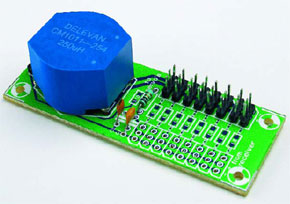Noise Suppression for R/C Receivers
-

If miniature ferrite beads are used for this purpose, the connector must be first be taken apart, after which the lead must be threaded through the bead (perhaps making several turns around the core) and then soldered back onto the connector.
This is a MEMBER ONLY article. You need a subscription to read this article.
- Access to Elektor archive and 5,000+ Gerber files
- Receive up to 8 magazines per year (digital and/or paper)
- 10% discount in the Elektor store
Available from €4.95 per month.
What is Members Only
Elektor is committed to providing high-quality content on electronics, catering to tens of thousands of paying members. As part of this commitment, Elektor has launched Premium, an initiative that offers exclusive online articles to members sometimes even before they appear in the magazine.
Every day, members can access in-depth articles that showcase the best of Elektor's premium content.
This initiative aims to reward members with early access. Once logged in, members can easily enjoy this exclusive content and engage in discussions about featured projects. While Premium adds to the existing resources available, Elektor will continue to provide a wealth of free information.
Join the Elektor community today to take advantage of Premium and other benefits!
Materials
Gerber file
CAM/CAD data for the PCB referred to in this article is available as a Gerber file. Elektor GREEN and GOLD members can exclusively download these files for free as part of their membership. Gerber files allow a PCB to be produced on an appropriate device available locally, or through an online PCB manufacturing service.
Elektor recommends the Elektor PCB Service service from its business partner Eurocircuits or AISLER as the best services for its own prototypes and volume production.
The use of our Gerber files is provided under a modified Creative Commons license. Creative Commons offers authors, scientists, educators and other creatives the freedom to handle their copyright in a more free way without losing their ownership.
Extra info / Update
On the PCB, swap connections 1 and 4 of indictor L9. Disconnect the tracks to both pins, then solder a piece of light-duty wire between pin 1 of the inductor and pin 1 of K17. Next, solder a second piece of wire between inductor pin 4 and pin 2 of K17.
Component list
R1 = 1Ohm
Capacitors:
C1 = 100nF
C2 = 22pF
Miscellaneous:
L1-L8,L10 = ferrite inductor, SMD 1206 (e.g. Digikey # PMC1206-202-ND)
L9 = common-mode coil (e.g., Digikey # CM1011-254-ND)
K1-K8 = servo cable
K9-K17 = 3-way SIL pinheader
PCB, ref. 054018-1



Discussion (0 comments)